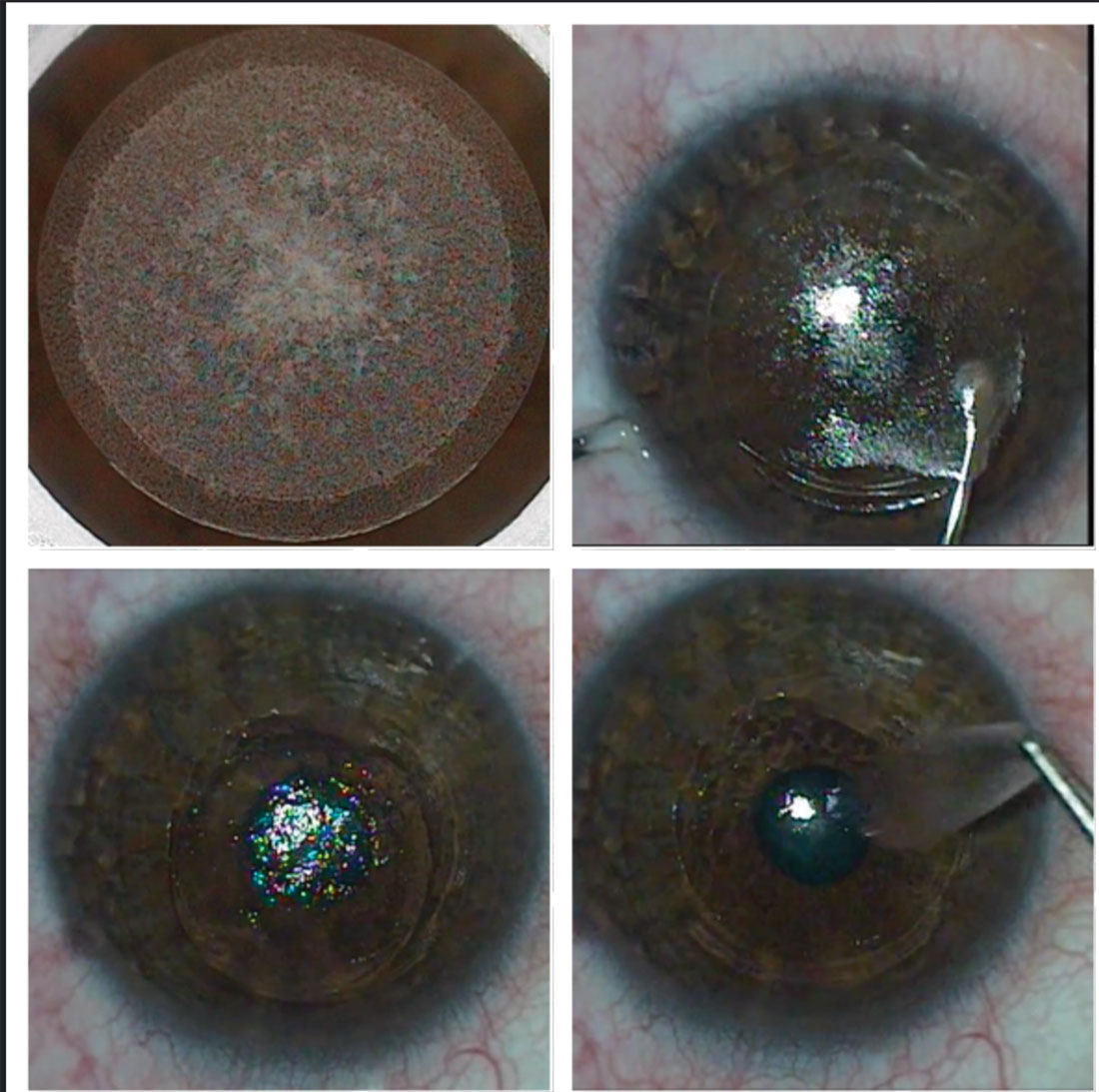 |
|
Patients with low-to-moderate astigmatism who undergo SMILE have a tendency to be undercorrected; however, overall, the procedure showed similar results as LASIK in terms of visual acuity and refraction. Photo: Bobby Saenz, OD. Click image to enlarge. |
Over the last decade, small-incision lenticule extraction (SMILE) has gained popularity as an effective alternative to LASIK for correcting astigmatism. A recent meta-analysis compared the clinical performance of both procedures in patients with astigmatism and concluded that both showed strong efficacy in vision correction. However, the data revealed a tendency of undercorrection in patients who had SMILE.
The analysis included five randomized and 12 cohort studies comparing outcomes of LASIK and SMILE that were gathered from several medical databases. Of the 1,985 eyes, 1,066 received SMILE and 919 received LASIK. Patients in each group were split into two subgroups depending on whether they had low-to-moderate or high astigmatism.
The researchers reported in their paper, recently published in the American Journal of Ophthalmology, that between the LASIK and SMILE groups, “a statistically significant difference was found in the correction index,” although there was no significant difference in the index of success, different vector or angle of error. For patients who underwent low-to-moderate astigmatism correction, they noted that SMILE exhibited a smaller correction index and a larger difference vector than LASIK.
There was no significant difference between procedures in visual acuity and refraction or high-order aberration, although there was a difference in spherical aberration.
Notably, the researchers pointed out that “the risk of bias was moderate in most studies due to poor reporting of several bias domains for randomized controlled trials and due to confounding and selective outcome reporting for non-randomized studies.”
The meta-analysis demonstrated that SMILE and LASIK both provided patients with similar positive outcomes. Additionally, inconsistent with previous research, this was found to be especially true for patients with severe astigmatism treated with SMILE, the study authors noted. “In the subgroup analysis for low-to-moderate astigmatism, the confidence interval showed a noticeable difference between SMILE and LASIK; SMILE also seemed to show a greater undercorrection and more residual astigmatism than LASIK,” they wrote in their paper.
The researchers summarized that “both SMILE and LASIK provide effective and predictable results and generally have equivalent outcomes,” although “evidence reveals a tendency of undercorrection in the SMILE groups for astigmatism correction. Besides, LASIK has a greater probability of causing postoperative spherical aberration.”
Song J, Cao H, Chen X, et al. Small incision lenticule extraction (smile) versus laser assisted stromal in situ keratomileusis (lasik) for astigmatism corrections: a meta-analysis. Am J Ophthalmol. November 18, 2022. [Epub ahead of print]. |


